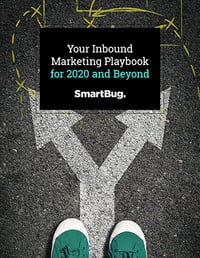
The 5 Stages of Conducting a Marketing Experiment, Explained
August 9, 2021
The old adage goes, “If you always do what you always did, then you will always get what you always got.” While consistency is valuable, marketers strive for growth in strategy and results.
To avoid stagnation, we take calculated risks and try new tactics to attract, retain, and convert our audiences. Marketing experiments are our way of measuring effectiveness and deciding whether to add the tactic to our ever-growing toolbox.
Now let’s get you started.
Marketing Experiment Basics
What is a marketing experiment, and why do we use them? A marketing experiment is a research method that helps marketers test strategic tactics for future campaigns. As most experiments do, it starts with an educated guess and research, and ultimately supplies information on what does and doesn’t resonate with target audiences.
Now the real question: Should you be running one? And the answer is Yes!
Don’t be fooled, though—marketing experiments can be done wrong. Read on for the five stages of a solid marketing experiment.
Stage 1: Hypothesize
Just like in the scientific method, a hypothesis is an educated guess. You don’t have to be an expert to hypothesize, but it helps to be knowledgeable about the brand, the audience, the industry, or even just marketing as a practice.
Create your hypothesis by getting curious. Ask questions like:
- Where do I want to see growth?
- What isn’t working well right now?
- What do I want to influence or see my audience do?
- What are my marketing goals?
These will help you see growth opportunities, pinpoint potential problems, and think about your current strategy with a more critical eye.
Example: You have a goal to increase conversions next quarter. You noticed that one landing page underperforms compared to others on your site, and you believe it’s because the form is too low and requires too much scrolling to see. Your hypothesis is that moving the form above the fold will increase conversions.
Stage 2: Research
With a hypothesis in hand, you should have a few ideas of where to gather information about your experiment. Often in your researching phase, you will run into others who have tested your theory or even ideas around best practices. Keep these in mind when running your own experiment, but remember every audience, brand, and industry is different. Their findings might point to possible outcomes and things to consider but may not produce the same results.
Additionally, while researching you might notice your hypothesis has shifted or changed. That is okay! Make adjustments to your experiment to suit your new hypothesis and ensure you have enough research to feel confident with your new direction.
Stage 3: Establish KPIs and Metrics
A key performance indicator (KPI) is a performance measurement. To measure success or failure, you will need something concrete to compare and ensure you are looking at facts and not relying on feelings or instinct. During the research stage, you should be able to see potential areas of focus that will tell the story of your experiment.
Establishing a baseline based on tactics of the past will give a unique look into your actual audience and brand. Gathering this information would include looking at analytics for your site, email, social media, and so forth. If you are just starting your marketing journey or don’t have a lot of historical data, marketing experiments are still possible! Look at best practices specific to the industry and tactics where possible.
Your KPI and metrics should also include a waiting period for when your experiment will end. An email might run its course in a matter of days, but a landing page might need weeks before you can confidently call your data collection.
Stage 4: Execute the Experiment
Before you begin, ensure there is only one variable. In the previous example, we established the hypothesis that the placement of a landing page’s form is affecting conversions negatively. The test was to move the form up higher on the page to see if that increased conversion.
In that experiment, we would only move the form. If you change the copy, button color, or form appearance and see increased conversions, it would mean you can no longer tell if the form’s location is what really improved performance. Even worse, if conversions decreased, you wouldn’t know which element to fix, and you would ultimately need to start from the beginning with no new information to lead you.
When you’re ready, run the test and stick to your pre-established testing period timeline. You can check progress along the way because chances are some patterns will begin emerging, but be sure to give the experiment the time it needs to really reveal results. It can be tempting to want to change things while the experiment is in progress, but that would also add more variables to your experiment.
Stage 5: Analyze the Results
Once your marketing experiment is over, review the results against the KPIs you established. Some tests will highlight whether your hypothesis was correct almost immediately while others might reveal unexpected results that require further testing.
Where You Can Start
If you’re itching to start your own marketing experiment but aren’t entirely sure where to start, we’ve got you covered. Below is a short list of simple marketing tests you can run with your own marketing strategy that can actually result in new tactics for your campaigns.
A/B Testing Email Subject Lines
Try running a test with and without emojis, or compare a statement with a question. This is probably the best place to start your marketing experiment journey.
Animation vs. Static Imagery
Incorporate gifs, videos, or swipe images in your social ads, and see how they perform against static images. If you don’t have the budget, keep it even simpler by comparing graphic elements to images with people.
Call to Action (CTA) and Pop-Up Placement and Design
Do you always place CTAs in one place or default to a specific color for pop-ups? Shift the location or design, and see if the change gets your visitors’ attention.
Change Send or Share Times
If your newsletter always goes out at 7 a.m. on Monday, shift the send time or day to see the effects on engagement. You might find you have an entirely different audience viewing your work or, if there is a decrease, that you’ve got more brand loyalty than you knew!
Discover more ideas on inbound marketing tests you should be running!
Push Strategic Boundaries and See What Your Brand Accomplishes
It’s easy to find yourself doing something because it’s always been done that way, but the world of marketing moves fast and keeping up means not resting on laurels. Now that you understand the five stages of a marketing experiment, you can more easily push your own strategic boundaries. Not all experiments will be winners, but take a few small steps and see just what your brand can accomplish!
For more insights on how to kick off a customer-winning marketing strategy, check out the Inbound Marketing Playbook for 2020 and Beyond from SmartBug®. It’s filled with advice and actionable steps for businesses across industries to meet their audiences where they are, no matter the budget.
About the author
Marissa Litty-McGill was formerly a HubSpot Technologist and Certified HubSpot Trainer with 10+ years of marketing experience spaning both B2B and B2C industries. Though she received her Communications degree in Journalism & PR/Advertising, she fell for marketing before walking across the University of Nebraska at Omaha's graduation stage. You can find her cross-stitching, gaming or exploring the world with her husband and dog when she isn't geeking out over inbound and databases. Read more articles by Marissa Litty-McGill.









